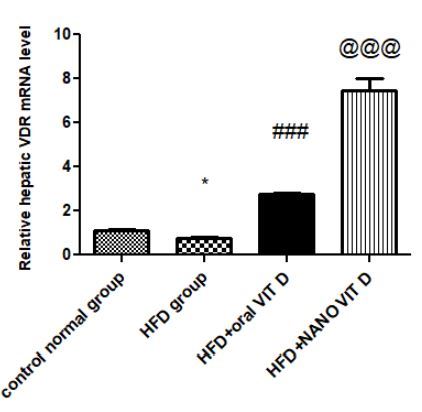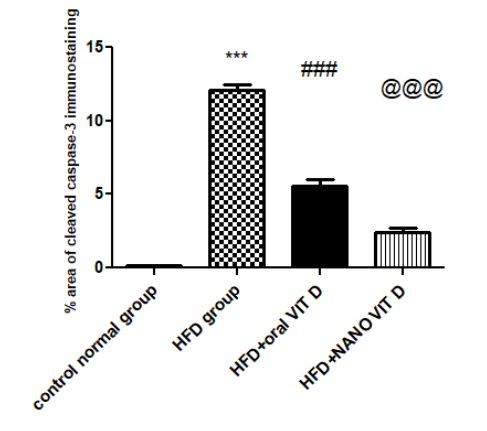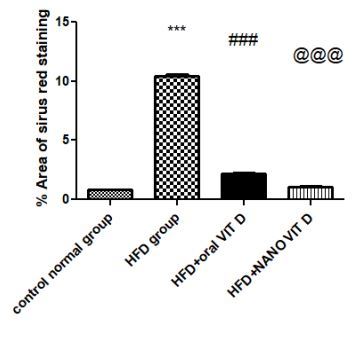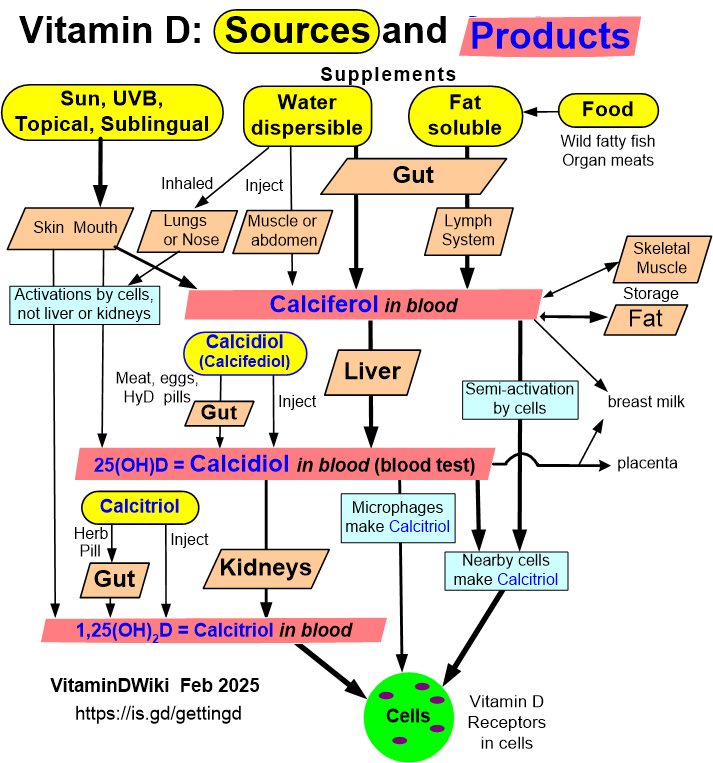Nanoemulsion Vitamin D may be a substantially better form
Looks very promising, but need to get confirmation
Have been aware that the Vitamin D Receptor can limit the vitamin D getting to cells
It appears that nanoemulsion form is somewhat able to
Substantially increase the activation of the Vitamin D Receptor in the liver
Substantially increase the vitamin D benefits in the liver
- Liver microphotographs documented that there was far less liver damage in rats getting microemulsion form
Wonder
Why did the activation of the vitamin D receptor improve?
Will this be confirmed in the liver by other studies? - Rats, Humans?
Will this be confirmed in other portions of the body - such as lungs ?
Possible forms include: gel-cap, topical (spray, liquid, cream), injection, intravenous, inhaled
Is the size of the nanopartical important? - seems to range from 20 to 1,000 nanometers
Might there be a shelf-life limitation? (note - putting nano-emulsion in refrigerator may shorten shelf-life)
Fastest proof would be by RCTs treating existing problems such as
Objectively meaure the reduction in drugs/pain pills for Allergy, Asthma, RTI, Back pain, Fibromyalgia
Use biopsy and then count cell problems from microphotos of lung, etc tissue with/without the nanoemulsion form
Bought 6 kinds of Vitamin D Emulsion - March 2019
Bought 6 kinds of Vitamin D Emulsion - March 2019
There are a variety of Vitamin D emulsions on Amazon (US) as of 2019
Bio Emulsion Forte is what I started buying in 2012.
I have given out 3 bottles (as of 2019) of it to friends with gut problems who were getting no benefit from standard vitamin D.
It worked well for them in each case
Since ~2017 I also have been purchasing Micro D3 Nanoemulsion for inhaled Vitamin D experiments
see further down this page details on nutrasal.com product
In March 2019 I also purchased PreventiX, Hi-Pro Emulsi-D3, Bio-Emulsion-D3, and Liquid Vitamin D3

They were added because
1) They had good Amazon reviews
2) Were likely to have a micro/nano size,
3) Seemed to have a > 1,000 IU per drop.
4) Were fairly low cost (per 5,000 IU)
I also have been getting some Vitamin D Nanoemulsion from Bio-Tech Pharmacal since ~2016.
They are making it for some Vitamin D clinical trials, and I have used it for inhaled tests.
Bio-Tech Pharmacal emulsion is not (as of 2019) being sold commercially.
Note: March 2019 Dried beans and peas in meal appear to decrease uptake of oil-based Vitamin D
If you often eat pulses when supplementing with Vitamin D, you might need to have a non-oil-based vitamin D, such as in the above picture
To speed up the rsponse swish the milliliter of nanoD in your mouth for a minute or two
This gets it directly into the blood stream without being delayed by the stomach, intestines, lymph (?), liver and kidneys.
Note: Virtually every cell in your body has the ability to fully process vitamin D
19+ VitaminDWiki pages with NANOEMULSION or EMULSION etc. in the title
This list is automatically updated
{LIST()}
See related in VitaminDWiki
Nanoemulsion type fights NAFLD much better in rats than regular vitamin D - April 2018
Vitamin D nanoemulsion enhances hapatoprotective effect of conventional vitamin D in rats fed with a high-fat diet
Chemico-Biological Interactions, online 11 April 2018, https://doi.org/10.1016/j.cbi.2018.04.010
Mohamed El-Sherbinya, f, Mohamed Eldosokyb, Mohamed El-Shafeya, g, Gamal Othmanc, f, Hany A. Elkattawyd, f, Tamer Bedire, Nehal Mohsen Elsherbinyh, i, , ,
Highlights
•Hypovitaminosis D often coexists with non alcoholic fatty liver disease.
•Vit D nanoemulsion attenuated HFD-induced liver injury, inflammation and fibrosis.
•Vit D nanoemulsion showed more hepatoprotective effect than conventional vit D.
📄 Download the PDF from Sci-Hub via VitaminDWiki
Nanoemulsion appears to activate the Liver Vitamin D receptor
- thus getting more to the liver cells

Nanoemulsion reduces fatty liver problems far better than regular vitamin D


Background
Non-alcoholic fatty liver disease (NAFLD) is associated with hyperlipidemia, obesity and type II diabetes. Due to increasing prevalence of these diseases globally, NAFLD is considered as a common form of chronic liver diseases. Vitamin D is a fat soluble vitamin with reported anti-inflammatory, anti-oxidant and immune modulating activity. Hypovitaminosis D often coexists with NAFLD and various studies reported beneficial role of vitamin D in modulating NAFLD. However, variable oral bioavailability, poor water solubility, and chemical degradation hinder the clinical application of vitamin D.
Purpose: We evaluated the potential protective effect of Vitamin D nanoemulsion (developed by sonication and pH-Shifting of pea protein isolate and canola oil) compared to conventional vitamin D against liver injury in rats fed with high fat diet (HFD).
Methods: We analyzed liver function enzymes, lipid profile, lipid metabolism, levels and histopathology of inflammation and fibrosis in rat liver tissues.
Results
HFD fed rats exhibited deterioration of liver function, poor lipid profile, decreased fatty acid oxidation and up-regulation of inflammatory cytokines and extracellular matrix deposition. Vitamin D administration reduced elevated liver enzymes, improved lipid profile, enhanced fatty acid oxidation and attenuated liver inflammation and fibrosis. Interestingly, vitamin D nanoemulsion was superior to conventional vitamin D with remarkable hepatoprotective effect against HFD-induced liver injury.
Conclusion
This study demonstrated vitamin D nanoemulsion as a more efficient formulation with more prominent hepatoprotective effect against HFD-induced liver injury compared to conventional oral vitamin D.
From the PDF
“Currently, there is no approved therapy for NAFLD”
“Nanoemulsions are liquid dispersions in which the size of droplets ranges from (50 to 500 nm) [19]. Compared to other conventional delivery systems, nanoemulsions show higher stability against phase separation, better bioavailability and absorptive capacity of hydrophobic compounds”
- Most of the rats had a diet high in Omega-6
- “daily oral dose of 40 IU/Kg” in regular or nanoemulsion forms
- Note by VitaminDWiki: 3,280 IU for 180 lb 'rat"
53 citations of this study as of June 2024
Bioavailability by design — Vitamin D3 liposomal delivery vehicles - July 2022 FREE PDF
Bioavailability of nanoemulsion formulations vs conventional fat soluble preparations of cholecalciferol (D3) – An overview - Mpv 2019 FREE PDF
See NAFLD VitaminDWiki
Strong association of non alcoholic fatty liver disease and low vitamin D
Fatty Liver Disease in 40 percent of seniors (seniors often have low vitamin D
NAFLD in children nicely treated by combination of Vitamin D and Omega-3 – RCT Dec 2016
Non-Alcoholic Fatty Liver Disease treated by Omega-3 – three meta-analysis 2016-2017
Increasing vitamin D level in blood failed to decrease Fatty Liver inflammation – RCT Aug 2014
See Genes and sources of vitamin D in VitaminDWiki
Vitamin D Receptor can restrict the amount of Vitamin D actually getting to cells
A VDR restriction is not detected by Vitamin D blood tests
Vitamin D Receptor category listing has items along with related searches
Genetics has a nice chart showing the 6 genes (including VDR) which restrict vitamin D from getting to the cells
- Getting Vitamin D into your blood and cells - has a nice chart showing Liver and VDR
Nanoemulsion Vitamin D gives about 2X more response in mice (and 3.9 X better in lab) – Feb 2018
The Efficacy of Nanoemulsion‐Based Delivery to Improve Vitamin D Absorption: Comparison of In Vitro and In Vivo Studies
Nahrung/Food, 62(4), 1700836, 2018, https://doi.org/10.1002/mnfr.201700836
Publication is also listed as: Mol Nutr Food Res. 2018 Feb;62(4). doi: 10.1002/mnfr.201700836
Alagu Selvi Kadappan - University of Massachusetts Amherst
Chi Guo - Hunan University, University of Massachusetts Amherst
Cansu E Gumus - Hittite University, University of Massachusetts Amherst
📄 Download the PDF from Sci-Hub via VitaminDWiki
SCOPE: Vitamin D (VD) is a fat-soluble vitamin that has a wide range of skeletal and non-skeletal functions. Although it can be synthesized through sun exposure and obtained from fortified foods, VD inadequacy is epidemic worldwide. Therefore innovative strategies are necessary for improving VD status. The present study examined VD absorption via nanoscale delivery systems.
METHODS AND RESULTS: We examine the physical characteristics and in vitro bioaccessibility of cholecalciferol (VD3 ) in nanoemulsion using a simulated gastrointestinal tract system .
To evaluate the in vivo bioavailability, we orally administer three groups of mice with
VD3 nanoemulsion,
VD3 coarse emulsion, or
vehicle nanoemulsion without VD3,
and the serum 25(OH)D3 is measured using radioactive immunoassay. The nanoemulsion-based delivery system increases the in vitro bioaccessibility by 3.94-folds (p < 0.05), as indicated by the concentration of vitamin D3 in micelles.
Our animal study shows that, when compared to the vehicle group, the coarse emulsion numerically increases the serum 25(OH)D3 by 36%, whereas the nanoemulsion statistically significantly increases the serum 25(OH)D3 by 73% (p < 0.01).
CONCLUSION: Our findings indicate that a nanoemulsion-based delivery system is a promising approach to improve VD bioavailability, and further studies are warranted to determine its efficacy in humans.
References of interest
Nanocarriers based delivery of nutraceuticals for cancer prevention and treatment: A review of recent research developments
Evaluation of vehicle substances on vitamin D bioavailability: A systematic review – 2010
Nanoemulsion delivery systems for oil-soluble vitamins: Influence of carrier oil type on lipid digestion and vitamin D3 bioaccessibility
- "..the measured bioaccessibility of vitamin D3 decreased in the following order: corn oil ≈ fish oil > orange oil > mineral oil > MCT."
- 📄 Download the type of oil PDF from Sci-Hub via VitaminDWiki
Technical details for making Vit. D nanoemulsion – 2015
Formation of vitamin D nanoemulsion-based delivery systems by spontaneous emulsification: Factors affecting particle size and stability
Food Chemistry, 171, 117-122, 2015, https://doi.org/10.1016/j.foodchem.2014.08.087
Marrisa Guttoff - University of Massachusetts Amherst
Amir Hossein Saberi - University of Massachusetts Amherst
David Julian McClements - University of Massachusetts Amherst
Oil-in-water nanoemulsions are particularly suitable for encapsulation of lipophilic nutraceuticals because of their ability to form stable and transparent delivery systems with high oral bioavailability.
In this study, the influence of system composition and preparation conditions on the particle size and stability of vitamin D nanoemulsions prepared by spontaneous emulsification (SE) was investigated. SE relies on the formation of small oil droplets when an oil/surfactant mixture is titrated into an aqueous solution.
The influence of oil phase composition (vitamin D and MCT), surfactant-to-oil ratio (SOR), surfactant type (Tween 20, 40, 60, 80 and 85), and stirring conditions on the initial particle size of vitamin D nanoemulsions was studied. Nanoemulsions with small droplet diameters (d<200 nm) could be formed using Tween 80 at SOR⩾1 at high stirring speeds (800 rpm).
These systems were relatively stable to droplet growth at ambient temperatures (<10% in diameter after 1 month storage), but unstable to heating (T>80°C). The thermal stability of the nanoemulsions could be improved by adding a cosurfactant (sodium dodecyl sulphate (SDS)). The spontaneous emulsification method is simple and inexpensive to carry out and therefore has great potential for forming nanoemulsion-based delivery systems for food, personal care, and pharmaceutical applications.
Vitamin E nanoemulsion – 2016
The influence of droplet size on the stability, in vivo digestion, and oral bioavailability of vitamin E emulsions
Food & Function, 7(5), 2294-2302, 2016, https://doi.org/10.1039/c5fo01517k
S. Parthasarathi - Academy of Scientific and Innovative Research, Central Food Technological Research Institute
S. P. Muthukumar - Central Food Technological Research Institute
C. Anandharamakrishnan - Academy of Scientific and Innovative Research, Central Food Technological Research Institute
Vitamin E (α-tocopherol) is a nutraceutical compound, which has been shown to possess potent antioxidant and anticancer activity. However, its biological activity may be limited by its poor bioavailability. Colloidal delivery systems have shown wide applications in the food and pharmaceutical industries to deliver lipophilic bioactive compounds. In this study, we have developed conventional and nanoemulsions of vitamin E from food grade ingredients (sunflower oil, saponin, and water) and showed the nanoemulsion formulation increased the oral bioavailability when compared to the conventional emulsion.
The mean droplet diameters in the nano and conventional emulsions were 0.277 and 1.285 μm, respectively. The stability of the emulsion formulation after thermal processing, long-term storage at different temperatures, mechanical stress and in plasma was determined. The results showed that the saponin coated nanoemulsion was stable to droplet coalescence during thermal processing (30-90 °C), long-term storage and mechanical stress when compared to the conventional emulsion. The biological fate of the emulsion formulations were studied using male Wistar rats as an animal model. The emulsion droplet stability during passage through the gastrointestinal tract was evaluated by their introduction into rat stomachs. Microscopy was used to investigate the structural changes that occurred during digestion. Both the conventional emulsion and nanoemulsion formulations showed strong evidence of droplet flocculation and coalescence during in vivo digestion. The in vivo oral bioavailability study revealed that vitamin E in a nanoemulsion form showed a 3-fold increase in the AUC when compared to the conventional emulsion. The information reported in this study will facilitate the design of colloidal delivery systems using nanoemulsion formulations.
Nanoencapsulation of Vitamin D in fish oil – 90 day shelf life – 2017
Fish oil based vitamin D nanoencapsulation by ultrasonication and bioaccessibility analysis in simulated gastro-intestinal tract
Ultrasonics Sonochemistry, 39, 623-635, 2017, https://doi.org/10.1016/j.ultsonch.2017.05.021
Niharika Walia - Vellore Institute of Technology University, University of Alberta
Nandita Dasgupta - Vellore Institute of Technology University
Shivendu Ranjan - Vellore Institute of Technology University, Research Wing, Veer Kunwar Singh Memorial Trust, Chapra, India, Xpert Arena Technological Services Pvt. Ltd., Chapra, India
Recently, nanoemulsions have been employed for different applications including food and drug industries for efficient nutrient delivery system. In this study, vitamin D (a lipophilic molecule) was encapsulated in fish oil for higher oral bioavailability. The oil-in-water nanoemulsion was formulated by ultrasonication technique with a droplet size range of 300-450nm and a shelf life of more than 90 days . The influence of oil, water and surfactant concentration was investigated by phase diagram. The formulated nanoemulsion had encapsulation efficiency in the range of 95.7-98.2%. Further, nanoemulsion passed through simulated gastro-intestinal tract revealed an increased bioavailability than non-encapsulated vitamin . Thus, the formulation can be used as a drug delivery vehicle for various lipophilic compounds. Till date, no one have fabricated an efficient nano-vehicle for the delivery of vitamin D as well as analyzed the efficient delivery system in simulated GI-tract, this is first of its kind study in this regard. This can be scaled up further after analyzing the safety aspects.
Review of Vitamin Nanoemulsions – 2018
Research Updates on Different Vitamins Based Nanoemulsions and Characterization of Nanoemulsions
In: An Introduction to Food Grade Nanoemulsions. Environmental Chemistry for a Sustainable World, 105-122, 2018, https://doi.org/10.1007/978-981-10-6986-4_6
Nandita Dasgupta - Indian Institute of Food Processing Technology
Shivendu Ranjan - Indian Institute of Food Processing Technology
Developing and marketing vitamin rich food products are major challenge because of efficient nutritional delivery system, longer stability, and shelf life. Nanoemulsified and nanoencapsulated vitamin based nanoemulsions have been developed to overcome these issues. Recently, vitamin based nanoemulsions have been developed and also been marketed. Here in this review,
(i) several vitamin enriched nanoemulsions have been discussed in which different oils have been used to meet specific need
(ii) the opportunities of such products in markets and research have been discussed;
(iii) the conventional nanoemulsion characterization techniques have been discussed and also
(iv) non-conventional and newly developed characterization techniques have been discussed to show their future and impact on nanoemulsion characterization.
Some nanoemulsion books on Amazon (April 2018)
Emulsion-based Systems for Delivery of Food Active Compounds: Formation, Application, Health and Safety $200 future
Nanoemulsions: Formulation, Applications, and Characterization
Ultrasonic Production of Nano-emulsions for Bioactive Delivery in Drug and Food Applications (SpringerBriefs in Molecular Science)
Nanoemulsion for Enhanced Oral Bioavailability 2013
Some nano, lipo, etc forms of Vitamin D on Amazon (April 2018)
- Micro D3 - Amazon $24 their webpage
- 916 drops of 2,000 IU each
- particle sizes probably 30-60nm "Sub Micron Emulsion Delivery System (M.E.D.S )"
- [ 📄 Download the information from VitaminDWiki
| 50,000 IU powder in capsule Example Biotech Pharmacal |
Nanoemulsion Example micro D3 |
|
| Average Cost per day for 10,000 IU |
4 cents | 8 cents |
| IU per serving | 50,000 IU = capsule | 2,000 IU = drop |
| Servings if want average of 10,000 IU/day |
1 capsule per 5 days |
25 drops = 1 /4 teaspoon per 5 days |
| Shelf life | 1 year? | 6 months? |
| Add to food/drink | Yes (powder) | possiblly |
| Apply to skin | No | Yes |
| Swish in mouth for fast response |
Yes if put powder in saliva or swish vitamin D water |
Yes |
| Gut-friendly | perhaps | probably |
| Availability to cell - better than bio-availability |
standard | perhaps 2X more - due to small size or activation of Vitamin D Receptor |
- Quicksilver Scientific Nanoemulsified D3-K2 $57 for 100 servings of 2,500 IU
- liposomes might be 20-100 nanometers.(tiny), sublinqual D3 -2500 IU, K2 - 90mcg, Phosphatidylcholine - 27mg.
- They have another product with ~15 micro nutrients with the same 2,5000 vitamin D per dose, but only 20 doses for $57
NOW Vitamin D-3 & K-2 Liposomal Spray, 2-Ounce $11: for 79,000 IU = very expensive
PuraTHRIVE, Liposomal spray D3 2500iu with K2 100 mcg MK-7 $38
Nanoemulsion of Vitamin D with cinnamon oil - 45 nmeter – March 2018
Formulation of vitamin D encapsulated cinnamon oil nanoemulsion: Its potential anti-cancerous activity in human alveolar carcinoma cells.
Colloids Surf B Biointerfaces. 2018 Mar 27;166:349-357. doi: 10.1016/j.colsurfb.2018.03.041. [Epub ahead of print]
Meghani N1, Patel P1, Kansara K1, Ranjan S2, Dasgupta N3, Ramalingam C3, Kumar A4.
Cinnamon oil is used for medicinal purpose since ancient time because of its antioxidant activity. Oil-in-water nanoemulsion (NE) of cinnamon oil was formulated using cinnamon oil, nonionic surfactant Tween 80 and water by ultrasonication technique. Phase diagram was constructed to investigate the influence of oil, water and surfactant concentration.
Vitamin D encapsulated cinnamon oil NE was fabricated by wash out method followed by ultrasonication in similar fashion. The hydrodynamic size of cinnamon oil NE and vitamin D encapsulated cinnamon oil NE was observed as 40.52 and 48.96 nm in complete DMEM F12 media respectively. We focused on the cytotoxic and genotoxic responses of NEs in A549 cells in concentration dependent manner.
We observed that both NEs induce DNA damage along with corresponding increase in micronucleus frequency that is evident from the comet and CBMN assay. Both the NEs arrested the cell cycle progression in G0/G1 phase, showed increased expression of Bax, capase-3 and caspase-9 and decrease expression of BcL2 proteins along with significant (p < 0.05) increase in apoptotic cell population and loss of mitochondrial membrane potential. NEs were also evaluated for bactericidal efficacy against E. coli. Thus, both NEs have cytotoxic, genotoxic and antibacterial potential and hence can also be used in food industry with cinnamon oil as carrier for lipophilic nutraceutical like vitamin D.
PMID: 29631227 DOI: 10.1016/j.colsurfb.2018.03.041
Liposome (1000 nm) of both curcumin and vitamin D3 - April 2018
Structural characterization of multilamellar liposomes coencapsulating curcumin and vitamin D3
Colloids and Surfaces A: Physicochemical and Engineering Aspects, online 9 April 2018, https://doi.org/10.1016/j.colsurfa.2018.04.018
Matheus Andrade Chavesa, , Pedro Leonidas Oseliero Filhob, , Camila Garcia Jangea, 1, , Rita Sinigaglia-Coimbrac, , Cristiano Luis Pinto Oliveirab, , Samantha Cristina Pinhoa, ,
This study aimed the production of multilamellar liposomes coencapsulating two hydrophobic bioactives, curcumin and vitamin D3, which present antioxidant and nutraceutical properties. Liposomes were produced by proliposomes hydration and stabilized with a mixture of xanthan and guar gums. Proliposomes were produced by coating of micronized sucrose method. Physicochemical properties of the dispersions were evaluated over 42 days of refrigerated storage. Microstructural characterization were performed by differential scanning calorimetry (DSC), small-angle X-ray scattering (SAXS) and small deformation rheological analyses. Liposomes showed spherical and near-spherical shapes and presented hydrodynamic diameters in the 680-1580 nm range. Curcumin and cholecalciferol were loaded into the same vesicles, with preservation efficiencies ranging from 89.6 to 93.3% and from 88.3 to 91.3%, respectively, after 42 days of storage. SAXS data showed that the lipid bilayer of liposomes produced in the presence of curcumin, vitamin D3, or a mixture of both, are very similar. Also, higher amounts of vitamin D3 did not affect negatively the stability of phospholipid vesicles. Overall, it was demonstrated that the coencapsulation of curcumin and vitamin D3 by liposomes is feasible and high contents of bioactives were retained throughout the storage time.
Activated Vitamin D in nanoemulsion - mice June 2019
Polymeric Nanoparticles Containing Both Antigen and Vitamin D3 Induce Antigen-Specific Immune Suppression
Found it difficult to understand the study
📄 Download the PDF from VitaminDWiki


